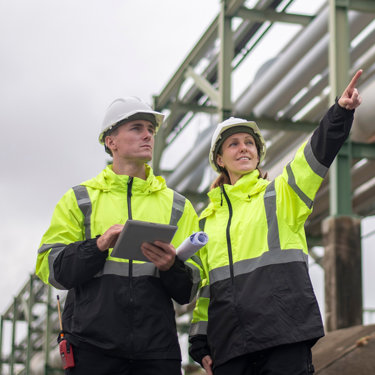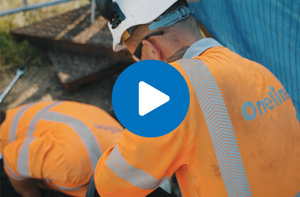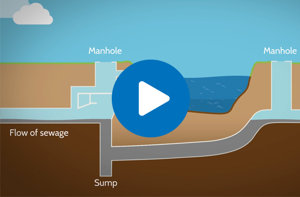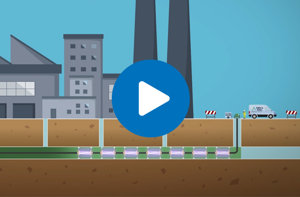
Exploring the biggest challenges facing water companies in AMP8
#FlowForward is your dedicated portal to insights, white papers, webinars, and other resources that challenge ideas, push boundaries, and highlight innovation in the water sector.
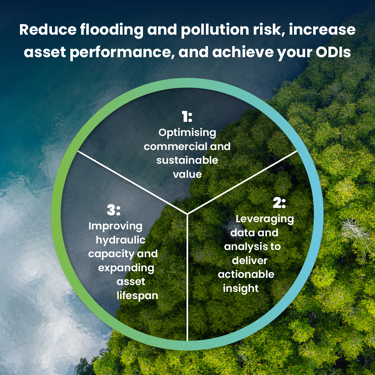
Follow the 3x3 formula: an action-focused white paper for the water industry
How combining consultancy, data, and engineering can reduce flooding and pollution risk, increase asset performance, and achieve your ODIs
The UK’s outdated wastewater pipe network is causing significant issues for water companies and their customers.
Internal and external flooding, storm overflow spills, and pollution incidents are hitting the headlines daily.
The logical conclusion is to build additional capacity. But there is a delicate balance between spending more versus spending more efficiently. We believe you can maximise your assets to improve and transform your environment using a simple but effective formula.
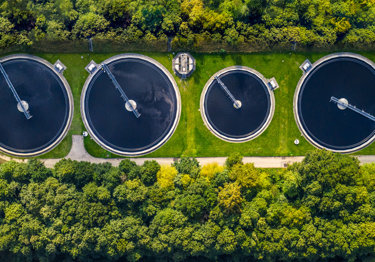
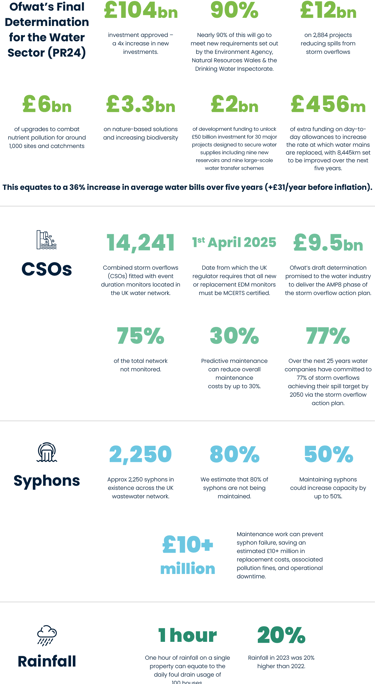
Optimising commercial and sustainable value
#FlowForward1
Ofwat’s draft determination provides the industry with £88 billion to reduce pollution, improve resilience, adapt to climate change, and work towards net zero emissions throughout AMP8. This falls somewhat short of what water companies requested.
While the gap may close through the final determination, it is clear that the pressure will be on companies to deliver the required performance improvement as efficiently as possible.
By leveraging data to improve decision making and driving the delivery of efficient, insight driven solutions across the asset lifecycle companies can minimise the financial risk associated and may even be in a position to obtain reward.
Don't get swept away in data: a strategic approach to digitisation
The relentless thirst for operational efficiency in water and energy utilities is often accompanied by a deluge of data.
With automation, AI, and smart grids beckoning, the pressure to digitise everything in sight can feel irresistible. But before you plunge headlong into a data tsunami, remember: sometimes the most valuable insights are hiding in plain sight.

The future is hydrogen
The task of transforming the UK’s natural gas network to hydrogen has many challenges ahead – not least that 2050 and visible climate change both loom large. But a clean energy future and a healthier planet are goals well worth striving for.
Several major hydrogen projects have been under way across the UK for some time. Gas networks are collaborating on the build, operation, and testing of new hydrogen and repurposed networks under the ‘Gas Goes Green’ programme.
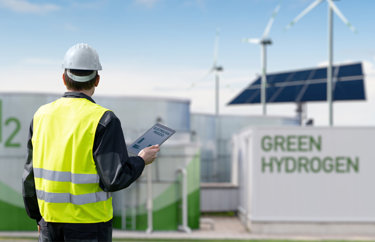
Has Ofwat compromised enough in its final determinations?
After years of meticulous planning and negotiations, Ofwat's final determinations in PR24 are here. There must be a compromise between much-needed investment and keeping customer bills affordable.
Delve into Ofwat's approach, including the softened stance on cost of capital, updated outcome measures, and risk-sharing mechanisms designed to weather uncertainty. Are these compromises enough for water companies and customers alike?
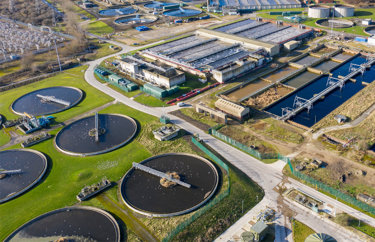
Leveraging data, analysis and insight to deliver actionable insight
#FlowForward2
Our indicates that 75% of the network is not monitored. So how do we know if the network is being utilised to its full capacity?
We believe there is more capacity available in the network and we want to help you find it.
Data allows you to analyse your network, gives you insight, and allows you to act. Those actions could be:
- React to an issue before a customer picks up the phone
- Map trends on flooding and blockages to allow you to be proactive
- Build a capital investment plan for the future
Without insight, any capital investment plans you have are based on theory, not fact. Where we have put data points in, we have found more can be done to expand hydraulic capacity without capital expenditure.
And if capital investment is required, data gives you baselines to work from that you can use to secure enhancement money from Ofwat in the future.
The future of event duration monitoring
Event duration monitoring is a vital component in managing wastewater systems. It involves tracking the duration and frequency of overflow events when the network's capacity is exceeded. As the landscape of evolves, water companies face new challenges and opportunities.
By implementing the latest advancements in event duration monitoring technology, we can better predict and prevent flooding and pollution, ultimately protecting our environment and communities.
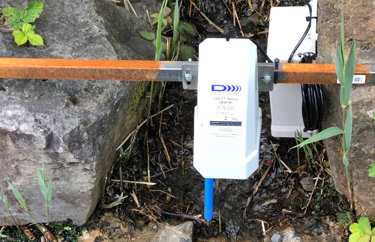
The challenges of delivering Section 82 of the Environment Act
Section 82 of the Environment Act 2021 hails a revolution in water quality monitoring, ushering in an era of real-time telemetry and fundamentally reshaping how we manage our precious water resources.
Water quality monitoring is currently undertaken routinely and following an incident, but it requires boots on the ground and can’t be done in ‘real time’. To achieve the new legislation, water companies will need more permanent, technical solutions to monitor upstream and downstream in real time at more than 14,000 storm overflows and 9,000 sewage disposal works in England.
Access to the watercourse, planning permission to deploy technology into the river, the selection of mixing zones to monitor, the quality of measurement, vandalism, power, and ongoing maintenance are all challenges which need to be thought through before a solution is reached.

Innovation 25
We are launching a series of new, innovative products in 2025 to help you tackle the key challenges of AMP8.
We are experts in the design, manufacture, installation, maintenance, and reporting of technologically advanced, cost-effective flow, level, and water quality measuring systems.
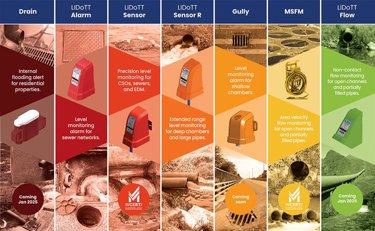
Improving hydraulic capacity and extending asset lifespan
#FlowForward3
It's easy to see why there is a belief that additional storage will solve all storm overflows. The water industry national environment programme and permits stipulate a volumetric storage, so water companies continue to build bigger and bigger grey tanks, often under instruction from regulators.
But before you dig up your network, you should ensure your assets, and the network overall, are operating at the original design capacity.
Operationalising your assets to improve hydraulic capacity
Ahead of AMP8, wastewater companies are looking for solutions to meet pressing challenges such as pollutions and internal and external flooding, while effectively managing an ageing infrastructure. The natural conclusion is normally more capital investment.
Yet data suggests that inflow and infiltration is one of the major factors affecting the operating capacity of the wastewater networks across the UK.
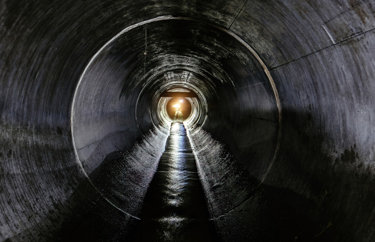
The forgotten asset that could unlock 50% extra capacity
We estimate there are around 2,250 syphons across the UK wastewater network. Syphons a forgotten asset which could increase capacity by up to 50% and improve storm overflow performance once maintained. Yet the majority of syphons are not being maintained.
What are syphons, why are they important and why should they be maintained?
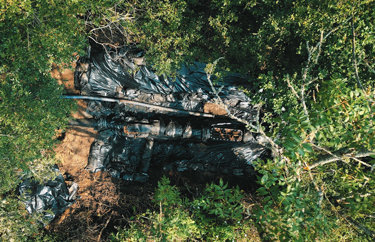
Impermeable area studies are key to managing urban rainwater
One hour of rainfall on a single property can equate to the daily foul drain usage of 100 houses. This striking comparison underscores the importance of understanding how rainwater from impermeable areas (such as roofs, roads and driveways) enters the foul sewer network.
Storm overflows will inevitably spill during rainfall because of these extra flows. The reality is that this issue often poses a greater challenge than infiltration and is significantly more expensive to resolve.

Understanding trenchless CIPP lining for drainage repair
You've had a CCTV survey and a number of defects have been identified with your drainage. Trenchless cured-in-place pipe (CIPP) lining has been mentioned as a viable option, so what next?
Ge to know the process of cured-in-place pipe lining, the various considerations involved, and an overview of the different technologies.
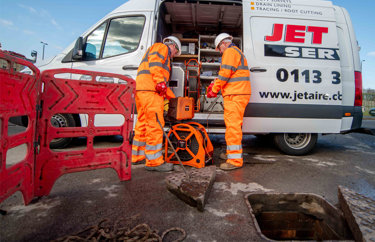
The risks of not having an up-to-date drainage plan
Without properly knowing the layout, condition, and capacity of your site drainage, you run the risk of operational downtime from site flooding caused by blocked drains. This can have a serious impact on your ability to generate revenue.
However, a pollution incident from contaminated surface and foul water entering the sewer and watercourses is going to have far-reaching repercussions, from regulatory enforcement to reputation damage.

Upcoming events
28–29 January 2025 in Birmingham
12 May 2025 in Newcastle
24 June 2025 in Birmingham
17–18 September 2025 in Birmingham
18–19 September 2025 in Plymouth
October 2025 in Birmingham
Upcoming webinars
Join us on 26 February 2025 at 10 AM for our webinar, Using biodiversity net gain to shape long-term planning and achieve business and sustainability outcomes.
Biodiversity net gain legislation (and the corresponding Welsh approach of net biodiversity benefit) launched in February 2024. There are a number of creative opportunities to use biodiversity net gain and net biodiversity benefit as a springboard to achieve wider business and sustainability outcomes.
In this webinar, experts Vyvyan Evans, Senior Environmental Consultant, Keava Mascott, Consultant Ecologist, and Ross Malton, Principal Sustainability Consultant will explore the practical implementation of biodiversity net gain and and net biodiversity benefit one year on:
- Using biodiversity net gain feasibility studies to build recommendations for increasing biodiversity output and delivering better habitat management strategies
- The impact of biodiversity net gain on long-term planning and cyclical industry programmes to inform development, land, and investment needs
- Using nature-based solutions to meet new biodiversity needs while delivering additional benefits
- Assessing the climate change impacts for blue/green infrastructure and how to ensure that the species chosen to enhance biodiversity will be resilient in the face of the changing microclimate
If you're responsible for managing or developing land or assets in any sector, this webinar is for you.
Environmental compliance today, creating a sustainable tomorrow
Helping you reduce risk to the environment and your operation by managing assets compliantly while achieving commercial, ESG, and net-zero goals.
Contact our experts